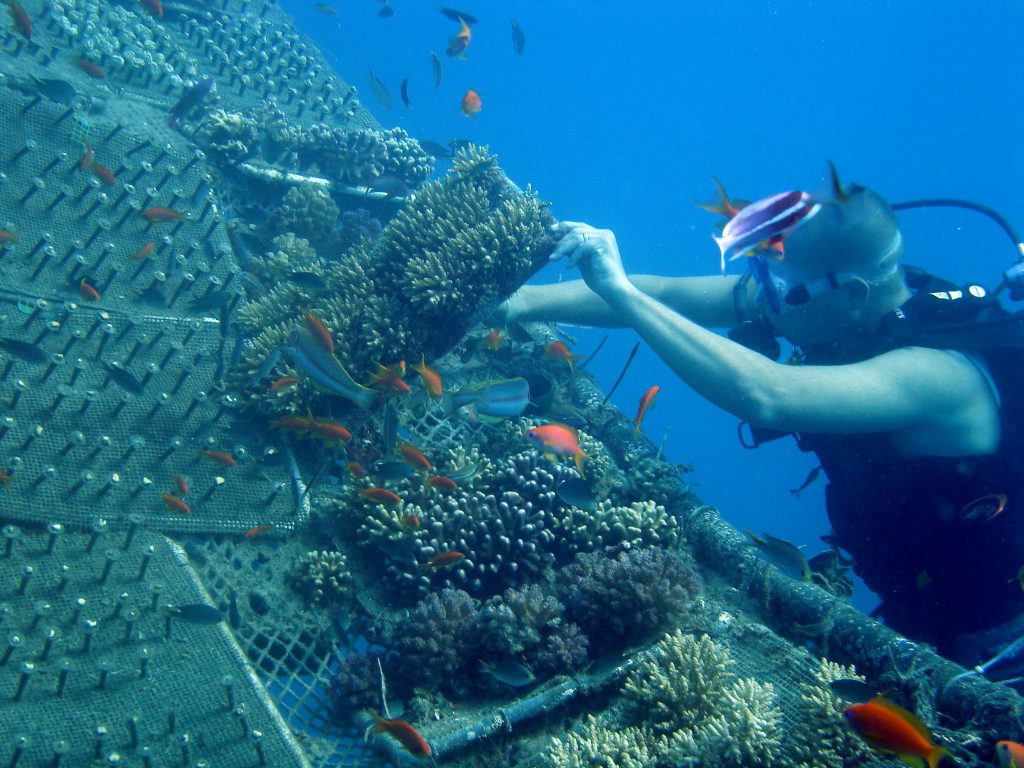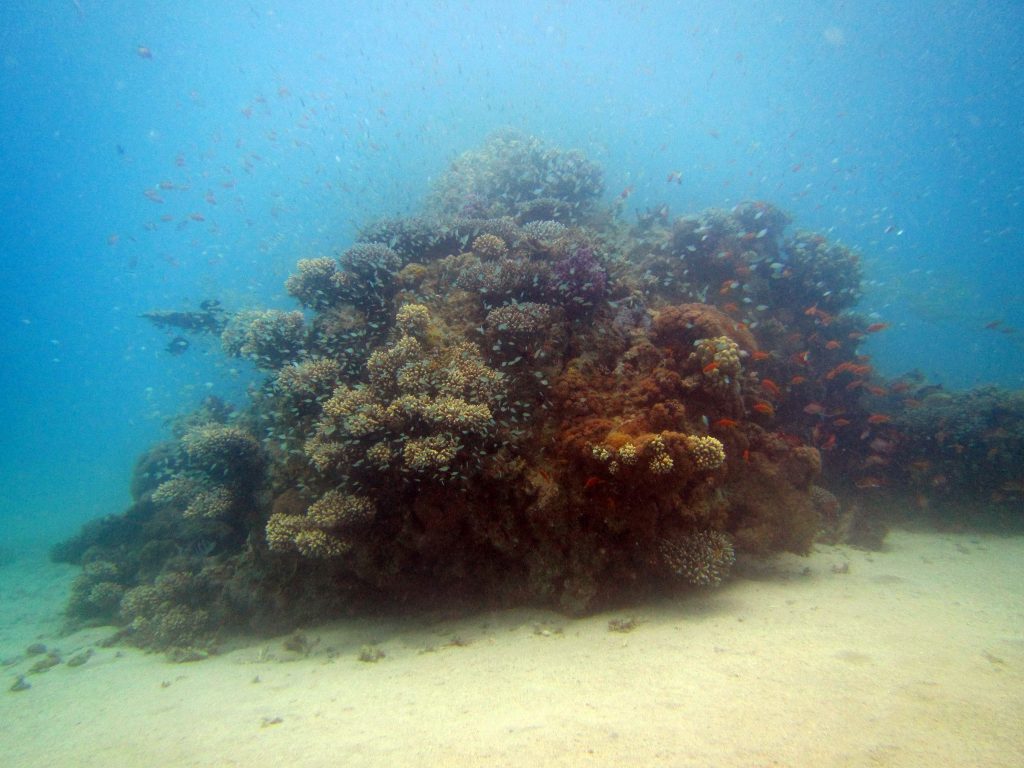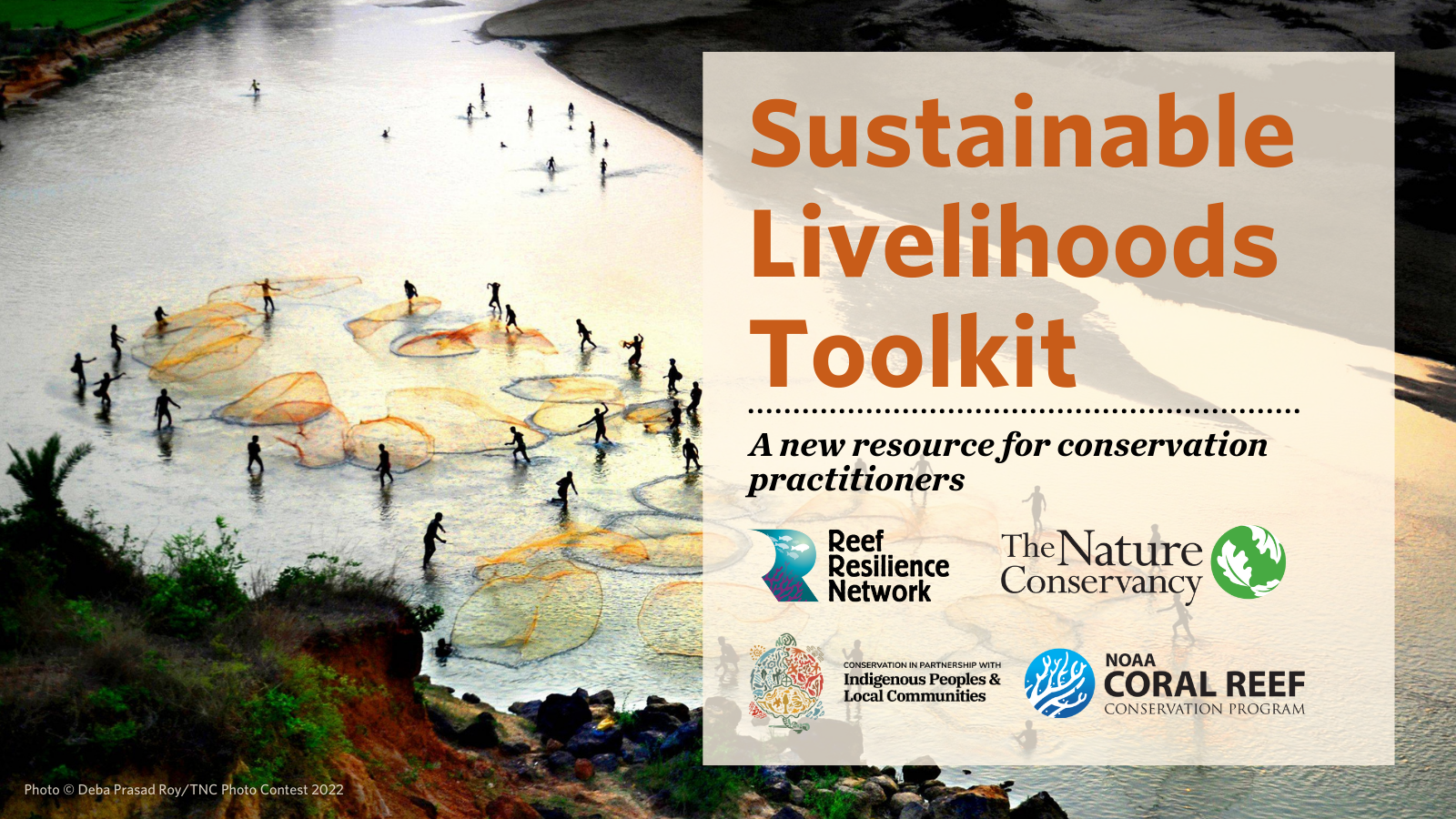Long-Term Outcomes of Repeated Restoration Efforts
Location
The challenge
Our challenge was three-fold: 1) A conceptual challenge – to restore a denuded reef that has been degraded by intensive anthropogenic activities, and is still impacted by unremitting human impacts; (2) An ecological engineering challenge – to significantly enhance long term survivorship of transplanted coral colonies; (3) A technical challenge – to securely attach transplanted corals on hard bottom three-dimensional reef structures, including vertical substrates.
Actions taken
- Nursery phase – Eight locally common coral species were selected for the project: seven branching species (Stylophora pistillata, Pocillopora damicornis, Acropora variabilis, A. humilis, A. pharaonis, A. valida, Millepora dichotoma) and a massive species (Dipsastraea favus). Coral nubbins were pruned from donor colonies and were maricultured until they reached sizes of fully developed colonies in an underwater floating reef nursery installed in the northern Gulf of Eilat.

Coral mariculture at the Eilat’s mid-water floating nursery (10 m depth): new colonies are generated from small fragments (left in the photo) and reared until developed to large colonies ready for transplantation (right). Photo © Y. Horoszowski-Fridman
- Permitting phase – Another major challenge included getting permits for the transplantation site, the transplantation methodologies and procedures, and the number of transplanted coral colonies per site.
- The transplantation phase – The approved transplantation site was a reef off Dekel Beach, about 3 km southwest of the nursery. This area is heavily impacted by various human activities due to its proximity to the navy, the commercial ports, and a popular diving center. The shallow reef at Dekel Beach (6-13 m depth) consists of scattered knolls on a sandy slope, mostly denuded of corals. We randomly selected 11 knolls that were divided into either ‘transplanted’ or ‘reference’ groups. A total of 1,400 coral colonies were transplanted during three transplantation sessions. The first session was started in 2005, and the following sessions occurred in 1.5 year intervals, which allowed us, for the first time, to repeat transplantation (i.e., add transplants onto knolls transplanted in former outplanting sessions). The transplants were secured to the knolls using an underwater drilling methodology that enabled the transplantation on vertical facets for maximum coverage of the target area. Monitoring was performed every 2-3 months over the first six years and sporadically for the next 9 years (now 15 years since the first transplantation event). The overall transplantation plan is described in Horoszowski-Fridman et al. 2015, 2020.
How successful has it been?
This study revealed encouraging and surprising results.
- Coral outplanting was not associated with any recorded stress to the coral colony, and over the long-term, the nursery-bred transplants had slightly lower survival rates than the highly adapted colonies naturally growing at the experimental site (Horoszowski-Fridman et al. 2015, 2020).
- Despite challenging environmental conditions at Dekel Beach reef site, the farmed transplants continued growing at enhanced rates, equivalent to those recorded in the coral nursery.
- The drilling methodology employed increased transplantation efficiency compared to gluing/cementing approaches and enabled transplantation on vertical facets (Horoszowski-Fridman et al. 2015).
- Repeated transplantation dramatically improved the survival of transplants. After 15 years, only the knolls that were repeatedly transplanted are still flourishing.
- Stylophora pistillata had improved reproductive outputs, releasing ten times more larvae than the colonies naturally growing at Dekel Beach for the eight years following transplantation.
- Transplants provided new habitats for coral-associated organisms (fish and invertebrates) that recruited to the restored site in high numbers.

A transplanted knoll at Dekel Beach, 11 years after it was restored by the ‘marine silviculture’ repeated methodology. Transplant colonies created complex spatial structures supporting a diverse reef-associated fauna. This knoll remained the same even 15 years post-transplantation. Photo © S. Shafir
Lessons learned and recommendations
- Coral reefs can be restored even in sites where human impacts are not relieved
- Nursery-farmed transplants can have enhanced and improved growth rates and reproductive outputs compared to local colonies
- Nursery conditions can ‘equip’ transplants with improved biological traits
- Improved attachment methodologies to the substrate enhance restoration efficiency
- Repeated transplantation emerged as an important ecological engineering tool in reef restoration
- Long-term outcomes attest to the restoration of reef associated fauna in addition to the restoration of coral communities
Funding summary
Funding sources: AID-MERC program (no M33-001) and the North American Friends of IOLR (NAF/IOLR).
Lead organizations
Dr Yael Horoszowski-Fridman, Dr. Shai Shafir, Oranim College, Israel; graduate students and volunteers.
This case study was developed in collaboration with the United Nations Environment Programme (UNEP) and the International Coral Reef Initiative (ICRI) as part of the report Coral Reef Restoration as a Strategy to Improve Ecosystem Services: A Guide to Coral Restoration Methods.


